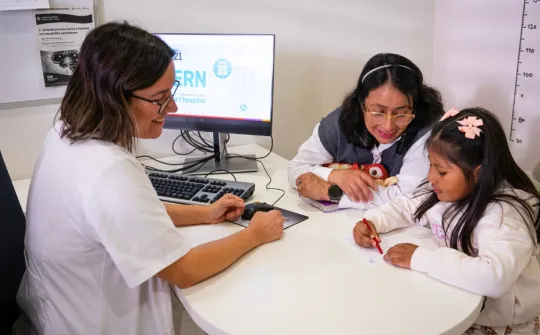
A team from the SJD Barcelona Children's Hospital and the SJD Research Institute, led by Carme Fons, took part in the development of this new algorithm.
A research team lead by Aurora Pujol, principal investigator of the CIBER Rare Diseases group (CIBERER) and the Bellvitge Biomedical Research Institute (IDIBELL), has developed an innovative new computer algorithm called ClinPrior. This algorithm has demonstrated its ability to improve diagnosis rates in patients with rare genetic diseases.
The SJD Barcelona Children’s Hospital and the SJD Research Institute (IRSJD) have collaborated on the development of ClinPrior under the supervision of Dr Carme Fons, Head of the Neurology Department at the hospital, and part of the research team.
The detection of rare diseases is a constant challenge in the field of medicine. Even though techniques like whole exome sequencing (WES) and whole genome sequencing (WGS) are very useful, there is still a need to find faster methods. Most tools available today use patient phenotype information to prioritise genome data. However, it is often limited by an incomplete knowledge of gene phenotypes stored in biomedical databases, and a lack of evaluation in real-world patient cohorts.
The ClinPrior algorithm handles these limitations in an innovative way. Based on Human Phenotype Ontology, it uses the patient's standardised phenotype features to rank candidate causal variants. Then it propagates data using an interactome network-based prioritisation approach, thereby allowing it to identify variants, with very high success rates.
This new development was published in the Genome Medicine journal.



